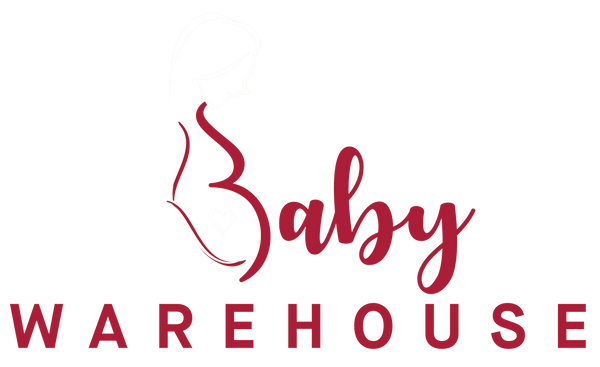
HOW TO CHOOSE THE BEST BREAST PUMP
Share
Learn how to choose the best breast pump from this guide (BabyGearLab). About the author: Dr. Juliet Baciocco Spurrier is a board certified pediatrician, mother of two, and founder of BabyGearLab. Feature image courtesy of Victoria 1 via Bigstockphoto.
If you are planning on breastfeeding your baby, it is likely that you will consider purchasing a breast pump as they are typically a nursing mother’s close companion during lactation. A great breast pump can sometimes even make all of the difference between a stressful breastfeeding experience and a great one or a lackluster supply and a robust one. Therefore, this is one baby-related item that is worth thorough consideration. However, figuring out which breast pump to buy can be very confusing. There are many manufacturers, models, and technical terms like “2-Phase Expression” that can send you running the other direction.
This article focuses is upon “Everything You Need To Know about Breast Pumps.” In it, we will guide you through the world of breast pumps and answer key questions. In addition, we highly recommend reading our Article titled Best Practices for Handling Breast Milk.
To also help you on your journey to finding the right breast pump for you, we tested 10 of the most popular single-use breast pumps on the market in an array of varying brands as well as both double electric and manual to find the best. We evaluated them comparatively them side-by-side on the following important criteria: efficiency, comfort, ease of use, portability, hygiene, and acoustics. You will find the results here in our Best Breast Pump Review.
Will you Need a Breast Pump?
Whether you are exclusively or partially feeding your baby breast milk, it is highly likely that you will use a breast pump somewhere along the way for one purpose or another. The frequency of its use depends upon your lifestyle and milk production as well as baby’s appetite.
Typically, a baby’s latch and sucking power during breastfeeding produce superior stimulation and volume in comparison to what a pump can accomplish during the same time frame. So, keep in mind that pumping may not letdown as much milk as during a nursing session with your baby. Also, know that every mother’s letdown and production can widely vary. While one may produce 5 ounces a side in a 15 minute pumping session, another mother may yield 2 ounces or less a side.
The following are common reasons why mothers choose to purchase and use a breast pump.
Engorgement
Breast pumps can feel like lifesavers when mom’s milk comes in. Some women have significant engorgement to the point where baby can’t possibly relieve mom of her load. In addition, it can be difficult for newborns to latch onto an engorged breast, so a pump can really come in handy to help reduce volume and soften the breast before baby is placed on.
Insufficient Supply
Pumps can also play a key role in stimulating milk production when a mom is faced with low supply. The physiology of breastfeeding is a demand-supply loop. By pumping for 10-15 minutes after baby has already nursed, the extra stimulation will typically create a more robust milk supply over time.
Challenging Mother-Baby Nursing Dyad
Occasionally, mothers are faced with great difficulty getting their baby to latch on and suck properly. The reasons for this can be many such as inverted nipples or a baby who is ill or developmentally delayed. In this circumstance, a mother needs a pump if she chooses to feed her baby expressed breast milk. To keep up with a full or part-time pumping schedule, these mothers often need powerful pumps to keep milk supply going. In this situation, often a stronger, multi-user pump like the Medela Symphony can be reasonably rented for for short or longterm use. Multi-user pumps are discussed below, although we did not test them in our Best Breast Pump Review.
Mother Working Out of the Home
Mothers who work outside of the home are typically away from their babes for extended periods of time and rely on breast pumps to create sufficient supply and demand so that they can continue to nurse. Breast milk is certainly the most nutritious and healthful option for baby and it takes a great breast pump and serious maternal dedication to keep this train going.
For mothers anticipating a return to work, it is important to build a stockpile of frozen breast milk. When to begin and how much to store depends upon a mother’s level of milk production as well as how many hours a week mom will be away. If mom is an overproducer, lucky her! If supply is a challenge, starting the storage process earlier may be helpful. Remember that supply is usually more robust in the morning, so occasionally pumping after a morning feed is one approach. Or, when baby takes only one breast, pumping the other will get you there over time. Regardless, breastfeeding while back to work requires daily dedication and preparation in order to keep production going. It truly is a labor of love!
Mothers In the Home
For those moms who are have the job of caring for their little one(s) full-time, a breast pump can be an integral tool for reasons already discussed: engorgement, low supply, and difficulty with latch and suck. But for the mother who is with her baby 24/7, this is a particularly nice reason to invest in a pump: Every new mama works hard (whether in our out of the home) and needs as well as deserves time away. By having a supply of expressed milk available, mom can get away for few hours to run an errand, exercise, or have a precious date night. Dads can also get in on the feeding action and bond with their baby by giving them expressed breast milk via bottle while mom gets much needed rest or me time.
The Affordable Care Act and Breast Pumps
Types of breast pumps
There are so many brands and styles of breast pumps available, that it can be very difficult to decide which one is right for you, other than what your friends have to say through their own experiences. You may also find that your needs may be very different from theirs. Each pump has its strengths, weaknesses, and individual price point.
Tubing and motors and bags galore! BabyGearLab’s Breast Pump line-up!
The two main categories of breast pumps are manual and electric. There are pros and cons to each and there are reasons why one or the other may work better for you. Read on as we define each a bit more clearly.



